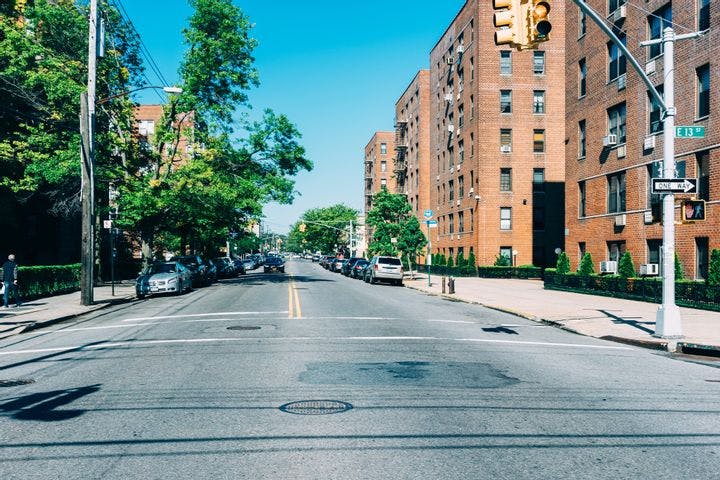Fall 2011
Where the Writers Live
– Leonard Benardo
Brooklyn not only has a literary tradition; its past is also consonant with the social currents coursing through American urban history.
New York City borough of Brooklyn is one of the most ethnically diverse places on earth. Drenched in working-class iconography, from baseball’s fabled Dodgers to the 1970s television series Welcome Back, Kotter, it has long been home to immigrants and the many other New Yorkers who can’t afford to live in Manhattan. It has scarcely been perceived as a hotspot for the cultural set. Yet over the past decade, much ink has been spilled charting the migration of writers to New York City’s suddenly fashionable destination. Some, such as the inimitable British novelist Martin Amis, have even come from across the pond. Few cultural critics have attempted, however, to put this development in historical perspective, a glaring omission given the rich diversity of Brooklyn’s literary tradition.
Blending literary and urban history, Brooklyn-based writer Evan Hughes assays these longue durée connections. Commencing with that rugged, empathic democrat, Walt Whitman, and following with a score of other character studies, including considerations of poets Hart Crane and Marianne Moore, Native Son author Richard Wright, and contemporary novelist Paul Auster, Hughes writes capably about the vast terrain Brooklyn writers have traversed. While most of this biographical material is culled from secondary sources, Hughes deftly weaves rich, allusive links between writers—whether Crane’s channeling of Whitman’s democratic ethos; the street-fighting, bravura prose styles of novelists Norman Mailer and Henry Miller; or the shared aspiration of literary critic Alfred Kazin and novelist Bernard Malamud to cross the East River.
Literary Brooklyn’s main contribution may lie in its subtle interweaving of history and literature. Hughes vividly evokes the dystopian currents of the Boerum Hill neighborhood in the 1970s, as reflected in the fiction of then-residents L. J. Davis and Jonathan Lethem. The suggestion that Boerum Hill would soon be populated by brownstone-buying gentrifiers would have produced nothing short of guffaws in what was at the time a broken-windowed enclave. And Hughes’s complex sociological portrait of Wright’s world in the 1930s and ’40s sheds light on the racial and class dimensions of elegant Fort Greene, showing how the demographic makeup of this once lily-white neighborhood and of Brooklyn as a whole changed as African Americans flooded into the borough during the Great Migration.
It is no fault of Hughes that the question of what constitutes a “Brooklyn writer” remains unresolved. He says at the outset that “there is no ‘Brooklyn school,’ ” and that “we shouldn’t mistake a massive place for an aesthetic camp.” He remains careful not to overreach. Writing of Moore, Hughes concedes that she “likely would have honed her unique voice . . . even if she had never moved to Brooklyn.” These are honest caveats. Without them, one wonders what William Styron or Thomas Wolfe, who spent only short spans of their careers in Brooklyn, would be doing in this lot. Or what Norman Mailer’s literary preoccupations—including executed murderer Gary Gilmore and the CIA—have to do with the borough of his youth.
Hughes’s urban history occasionally veers toward the inductive when gratuitous facts— repetitious rehearsals of who lived down the street from whom—interrupt the narrative flow. Photos would have helped, too. And the final chapter seems the product of an editor’s ukase to trumpet the present Brooklyn renaissance. Here Hughes departs from the introspection of the rest of the book, leaving us with a laundry list of current literati.
Quibbles aside, unpacking the historical relationship between a city and its literary culture is no easy feat. Kings County deserves more than puff pieces on the “New Brooklyn.” Hughes has written a sensitive literary history on an underexplored theme. And as he makes abundantly clear, Brooklyn not only has a literary tradition; its past is also consonant with the social currents coursing through American urban history.
* * *
Leonard Benardo is associate director of the Open Society Foundations and the coauthor, with Jennifer Weiss, of Brooklyn by Name: How the Neighborhoods, Streets, Parks, Bridges, and More Got Their Names (2006).
Reviewed: Literary Brooklyn: The Writers of Brooklyn and the Story of American City Life by Evan Hughes, 2011, Holt, 337 pp.
Photo courtesy of Flickr/Roman Kruglov
